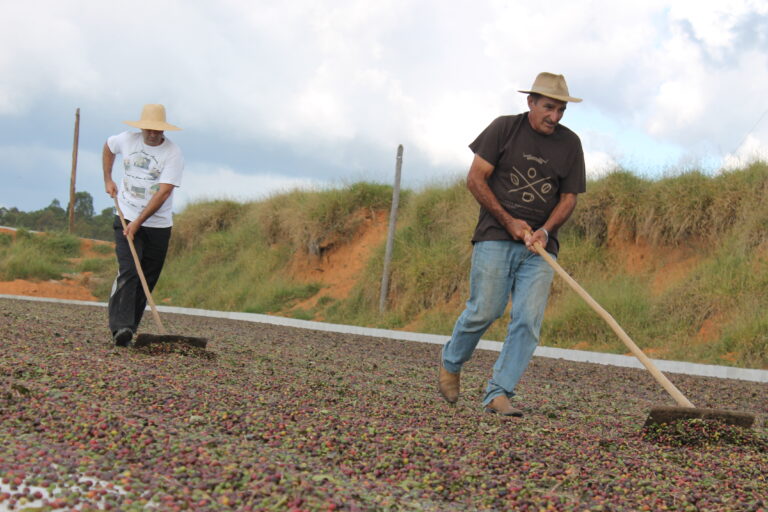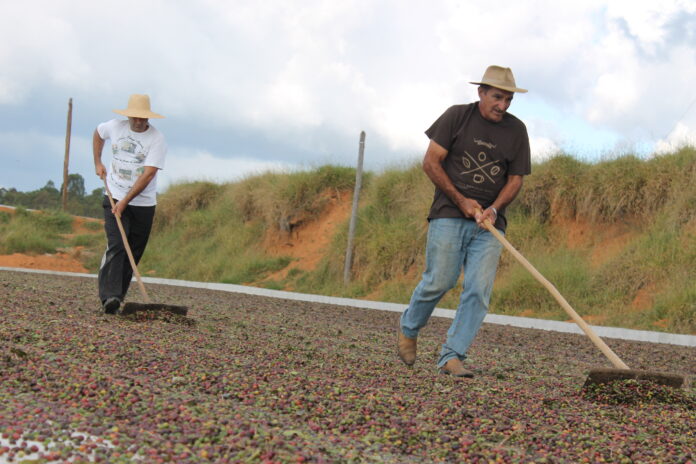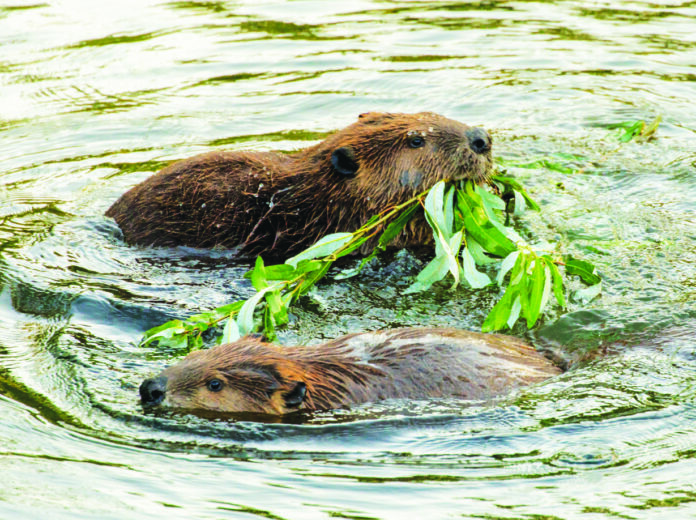Bill Ostrander was showing his brother-in-law around his Kenwood vineyard one summer day last year when the tour turned totally horror-show, from the perspective of a grape grower: suddenly, they came upon a patch of grapevines with wilted leaves, desiccated grapes and trunks cut in two. Ostrander had suspicions about who the culprit might be.
Ostrander’s vines, planted as Syrah in 1997, had already suffered a severe pruning once before, when they were cut in half and re-grafted onto another variety, “because Syrah wasn’t possible to sell,” the Kenwood resident says. The vineyard is just two-and-three-quarters acres, but it provides him a little income. And his new Malbec vines had attracted some unwanted customers: beavers.
When grape growers in Sonoma and Napa wine country encounter such a problem with beavers, as rare as that is, they are legally entitled to apply for a permit to have that animal trapped and killed. Yet Ostrander hesitated. He set up a digital “critter cam” to catch the culprit in the act, tried out various methods of fencing them out of the vineyard and documented his efforts in a light-hearted email series to friends and family that he called “Wet Caddyshack.” Clearly, there was something about this determined rodent that was different than, say, a common pocket gopher, which Ostrander says he would be happy to get rid of.
There’s something different about the beaver, indeed, as Ostrander learned from his interaction with a local cadre of “beaver believers” who are on a mission to help property owners live with the beaver, encourage their habitat and ultimately change the game plan for what they say is a woefully underappreciated keystone species in the state of California.
The first step is getting past California’s “beaver blind spot,” as the Occidental Arts & Ecology Center’s Brock Dolman puts it. Dolman is co-director, with Kate Lundquist, of OAEC’s WATER Institute (Watershed Advocacy, Training, Education and Research), established in 2004 to study and promote watershed issues. The award-winning duo’s “Bring Back the Beaver” campaign, started in 2009, went back on the road in the North Bay last month with a talk in connection with a screening of the environmental documentary Dirt Rich in Novato; appearances continue through June in Napa, Sonoma and Marin counties.
“A lot of people just don’t know that we have beaver in California,” says Lundquist, who says that their current presentation is an update on a 2015 talk they gave in Sonoma to help answer the question: “That’s an East Coast thing, right?”
Despite the Canadian-sounding name, charismatic Castor canadensis is native to all of North America, and is a close relative to the Eurasian beaver, Castor fiber, which Europeans exploited to near extinction for its castor oil and the fine hat-making properties of its dense fur. The discovery of beaver and other hapless, furry critters in the New World inspired a “Fur Rush” long before the Gold Rush. Turns out, according to Lundquist, when the Russians founded Fort Ross in 1812, it was actually kind of late in the game—and trappers had been exploiting the West Coast for decades before the legendary “mountain men” trappers descended on the Golden State from overland to clean up the rest.
Although a historical account from General Mariano Vallejo found the Laguna de Santa Rosa “teeming with beaver” in 1833, by 1911 California had about 1,000 beavers left before legislators passed a law briefly protecting the aquatic rodents. Following a quarter-century-long campaign to reintroduce beaver to erosion-threatened habitat (the highlight of the “Bring Back the Beaver” show is the parachuting “beaver bomb” developed during the time), they were determined non-native and invasive for decades thereafter.
Today in California, trapping beaver is permitted in 42 of 58 counties, and there is no bag limit to the number taken. While Napa, Sonoma and Marin counties are excluded, beaver are considered a nuisance species everywhere, meaning that farmers, landowners and government agencies that encounter beaver problems may apply for depredation permits to have them removed.
And the only option is lethal removal, as longtime Napa grape grower Andrea “Buck” Bartolucci found when he asked the California Department of Fish and Wildlife about his beaver problem in 2013. One day while driving down the half-mile driveway of his 160-acre Madonna Estate Vineyard in the Carneros, Bartolucci noticed a similar problem to Ostrander’s: a string of grapevines cut down at the trunk. It was so methodically done that he initially wondered if an employee had become disgruntled, but he found it was beavers from nearby Huichica Creek. “They knocked down a couple of trees and had a party with the grapevines,” Bartolucci says.
Fish and Wildlife recommended contracting the county trapper, and at the time, Bartolucci was impressed with the 60-pound creatures that were trapped. “They’re fierce!” Bartolucci says. “It’s not like Bucky Beaver.” Yet Bartolucci says the environment is important to him, having farmed his vineyard certified organically since 1991, and now laments that it was the only option that was given to him at the time. “I’m not the kind of guy who wants to do in an innocent animal,” he says, “and if there was an alternative, I’d certainly look into that.”
The sticking point is that Fish & Wildlife abides by a “shall issue” code when it comes to beavers. That is, if a landowner can verify property damage from beaver, the responding officer shall issue a depredation permit. Unlike some other Western states, California does not allow live trapping and relocation of beaver, or many other animals.
Those permits numbered some 3,300 in 2016. Though California does not require records of depredations completed, the U.S. Department of Agriculture’s Wildlife Services does for its separate permits; it counted 836 in 2016. According to the local office for Sonoma and Napa counties, one permit was issued for beaver in 2018, but it was not verified that any were actually taken under that permit.
This business as usual for beavers started to change after a pair of them wandered into Alhambra Creek in the middle of the city of Martinez in 2006. They built a dam and had yearlings, called kits, but the city’s application for a permit to make them go away did not sit well with locals who could see the kits playing as they drank their coffee. Resident Heidi Perryman formed the beaver advocacy group Worth a Dam, which holds its 11th annual Beaver Festival on June 30 in downtown Martinez.
A few years later, a somewhat less celebrated pair of beavers set up house on Tulocay Creek, which passes under Napa’s Soscol Avenue at the Hawthorn Suites hotel. An otherwise unimpressive urban drainage, this section of Tulocay sprang to life after the beavers set up a serviceable little barrier of sticks and mud: numerous species of birds, amphibians and mammals like otter and mink have been observed by wildlife watchers keeping an eye on the pond, including wildlife photographer Rusty Cohn, who has photographed and made videos of beavers swimming, munching on cattails and even falling asleep in mid-munch while trying to rebuild the dam after the rains of 2017.
Luckily for the beavers, advocates have convinced the hotel to wrap the trees on their landscaped grounds with wire to deter the animals from gnawing on them, and a new hotel project now under development on the other side of the creek is not now affecting the beavers, who are rebuilding their dam after the higher water flows of last winter.
The Napa County Flood Control and Water Conservation District, however, is responsible for the bank of the stream, not the proposed Cambria Hotel, under development by Southern California–based Stratus Development Partners. Lundquist praises the Napa agency as pro-beaver, saying, “I’m grateful that there are flood-control agencies that recognize the beavers, and I encourage all of our flood agencies to learn from the Napa district, because they’re doing a great job.”
With the OAEC as consultants, the county plans to lower the water level of the beaver pond temporarily, to facilitate shoring up the bank, thus avoiding a number of potential pitfalls, according to Kevin Swift, who’s contracted to do the pond-leveling work.
Swift is the proprietor of Swift Water Design, a one-man, “non-lethal beaver-management” startup that, Swift says, would require 10 of him if even a fraction of the agencies and individuals currently trying to manage their beaver problems would call him. Swift assesses problems and implements solutions that, while relatively simple, require a different way of thinking about beavers. He speaks eloquently, if colorfully, about the rodents’ role in the environment.
“They’re ignored, underappreciated, reviled and mismanaged in equal measure,” says Swift, who emphasizes that beavers, for all their engineering abilities, are not intellectual powerhouses. “It’s got a brain the size of an acorn. If you can’t work it out with them, could be you’re the problem.”
Currently, Swift is working with a property manager in Glen Ellen who’s got a beaver that’s blocking a spillway in an old stock pond located near a confluence of streams. “It looks like, way back when, a rancher went and put in a dam,” he says, “just where a beaver would, really.” It’s not in use, but the property owner can’t risk being responsible for a failure of the old dam, either. The solution lies in understanding the beaver’s simple needs.
A beaver’s “programming set is very small,” says Swift, “but profound in its implications. It’s like, if you hear running water, and you feel like you’re going to get eaten, make the running water stop making that noise. As soon as it stops making that noise, punch a hole in a creek bed somewhere and make more of yourself. And you’re good.”
Beavers build dams mainly to stay safe from predators, such as coyotes. Secondarily, the flooded area around the dam encourages felled riparian tree species, like willow, to sprout back and create more beaver food. “I mean,” says Swift, “it’s just this tiny, tiny little sliver of code, out of which falls an entire ecosystem.”
Swift makes no claims to sentimental concern for the animals, joking, “If you want to shoot a beaver in the head and make a hat, I’m OK with that.” More seriously, he points to the waste of potential environmental services the current policy promotes.
“It seems to me that all the laws are backwards,” he says. “You don’t need a permit to destroy a beaver dam that makes critical habitat for rare, threatened and endangered species—but you might need a permit to put in a flow-control device that’s hydrologically invisible and maintains the habitat for rare, threatened and endangered species. How does that work?”
Coho salmon, chief among those threatened and endangered species, first inspired the OAEC’s Dolman and Lundquist to think about beavers. Coho, which experienced a sharp decline in population in the 20th century, as well as other salmonid species, require cool water, complexity of habitat and water flow in summer and fall. “And our sense was, we need all the help we can get,” says Dolman. “We kept coming across these papers, especially work out of Oregon and Washington state,” he says, that showed “a positive correlation . . . between beneficial beaver habitat and a support for coho salmon, specifically—also steelhead and Chinook.”
“And it just got us thinking,” says Dolman in his 2015 presentation in Sonoma. “We ought to bring another tool in the toolbox here. And so we began really looking at beaver as an additional component to how we could recover these endangered species.”
In Sonoma County’s Russian River watershed, a host of agencies contributed to a salmon release and the construction of an expensive beaver pond analog in 2013, touted to promote the return of coho that, ultimately, would not be dependent on a hatchery. Beaver believers say that this, and much more, could be more cheaply achieved by simply letting the beavers alone. No beavers have been documented in the Russian River watershed, but there is an unsubstantiated report of a beaver being killed in reputedly environmentally conscious west Sonoma County—perhaps the “disperser” that had previously been observed moving west from Spring Lake in Santa Rosa.
Some cattle ranchers in Nevada, in fact, are moving further ahead in beaver consciousness than landowners in California wine country, according to Lundquist. “They stopped shooting them, and suddenly they have more water,” Lundquist says. Some have gone on record as saying they wouldn’t be in ranching now if it weren’t for the beaver.
Perhaps wine country has some catching up to do in this regard, when a property like Napa County’s Domaine Chandon, which is certified Fish Friendly Farming for one of its vineyards, can claim on its website, “We embellish waterways with native vegetation, maintain wildlife corridors, preserve forested areas in the vineyard and employ clean water protection to encourage fish habitat and spawning,” while applying for a 2013 permit to kill beaver in that very same fish-spawning habitat.
And if the beaver believers are right, as the numerous scientific studies they point to suggest, there is no better way to be fish-friendly than to be beaver-friendly. The beavers are not going away. There are some intractable parties, such as the absentee landowner on Sonoma’s Leveroni Road who, according to state records, refuses to consider alternative options to repeated depredation permit requests. But ultimately this approach is doomed to fail, says Swift.
“A story you often hear in California,” says Swift, “is, ‘I’ve been going down to that place for an hour every day for X number of years, and I’ve shot and trapped Y number of beavers, and they’re still there!’ Yeah, you’re in beaver habitat! Geology drives beaver habitat. Unless you can literally move mountains, you’re not changing anything about beavers’ attraction to your site.”
Lundquist says killing beavers is neither a viable nor economical strategy. “For one, people hold candlelight vigils, like they did in Tahoe. And it can be really bad press if you’re trying to do the right thing—or be seen as doing the right thing, anyway.”
Thus far, few Sonoma and Napa wineries seem to have any clue as to what that right thing may be. The 427-page California Code of Sustainable Winegrowing Workbook, for instance, on which the Sonoma County Winegrowers bases its initiative to make Sonoma County 100 percent sustainable by 2019, only mentions beavers incidentally in a section on “often overlooked” aquatic habitats.
Meanwhile in Kenwood, grape grower Bill Ostrander has found a way to live with the beavers. After consulting with Dolman, he installed a fairly inexpensive, single-strand electric fence that only had to reach four inches off the ground—beavers can’t jump, and since they’re generally covered in water, they’re highly conductive.
Ostrander had thought about the usual option. “Yeah, I thought about it,” he says, “but it was fairly straightforward and inexpensive to put up the electric fence, and not a lot of trouble as far as impacting the operations in the vineyard.”
Although he hasn’t seen the rodents personally, it does seem that Ostrander enjoys observing them, as well as the other animals caught on camera, like the surprise appearance of a family of otters.
It should be no surprise if the mere “life support” activities that various agencies employ to keep salmonids and other threatened species won’t cut it through the upcoming challenges of climate change, says the outspoken Swift. “Until we can coexist with beavers, those of us in the restoration movement, those of us that want to move the dial in a positive direction, are hamstrung by a regulatory environment that’s solely focused on doing less bad less often.” Swift looks forward to a day when the state can start turning the beaver’s tail in the other direction. “If you’re headed south, it doesn’t matter how slowly you go south—you’re never getting north.”
Science Buzz Cafe’s Beaver in California Slide Show screens at HopMonk Tavern in Sebastopol, June 27 at 7pm. 230 Petaluma Ave., Sebastopol. facebook.com/sciencebuzzcafe.
Ben Goldfarb is joined by the OAEC’s Kate Lundquist and Brock Dolman on June 29 at 7pm at Copperfield’s Books in San Rafael for a signing and discussion of ‘Eager: The Surprising, Secret Life of Beavers and Why They Matter.’ 850 Fourth St., San Rafael. copperfieldsbooks.com/event/ben-goldfarb.
For information on the Martinez Beaver Festival on June 30, from 11am to 4pm, visit martinezbeavers.org.



















